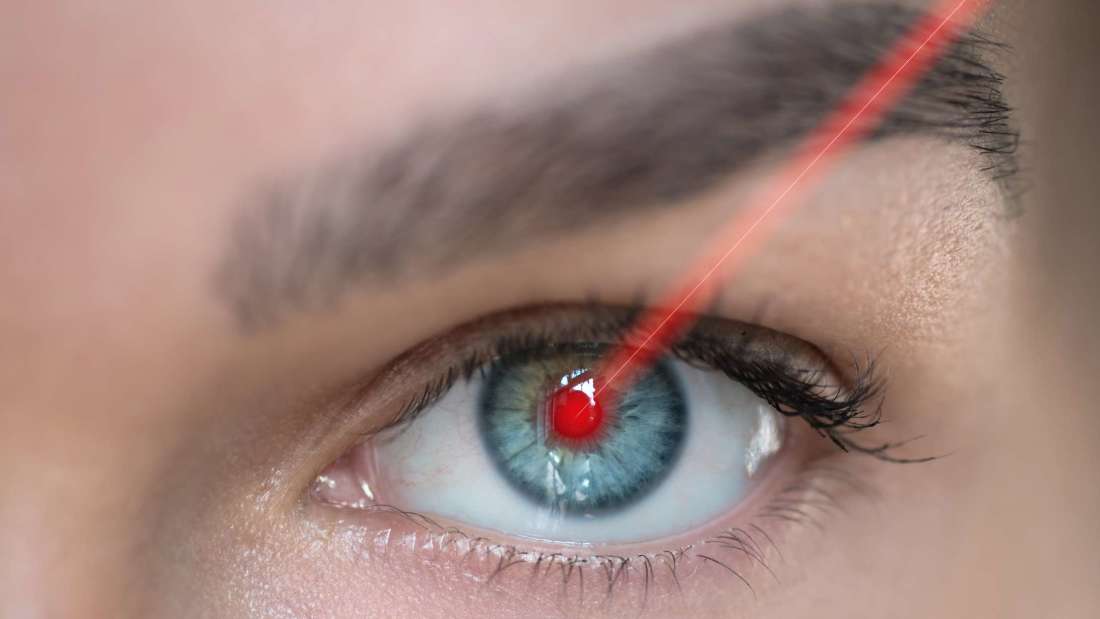
If you ever wished you had Superman’s ability to shoot lasers out of your eyeballs, you can thank science for helping to make your dream more of a reality. Researchers at the University of St. Andrews in Scotland have developed an ultra-thin membrane that can be attached to contact lenses, allowing lasers to be emitted, Newsweek reports. Their findings were published in the journal Nature Communications.
The membrane is made from an organic semiconducting polymer, and the lasers it emits are being billed as the world’s smallest and lightest. It was tested on a cow’s eye, but researchers say they expect it to be safe for human use.
“In ancient Greece, Plato believed that visual perception is mediated by ‘eye beams’—beams actively sent out by the eyes to probe the environment,” Malte Gather, one of three researchers who conducted the study, said in a statement. “Plato’s emission theory has of course long been refuted, but superheroes with lasers in their eyes live on in popular culture and comic books. Our work represents a new milestone in laser development.”
When the membrane is illuminated by another laser, it’s able to produce a unique “digital barcode.” Fighting off villains is probably not the most practical application of an ocular laser, but it could be used as a “flexible and wearable security tag,” according to researchers. This could prove useful to the fields of biophotonics and photomedicine, and could even be used to detect explosives. Researchers discovered that the material could
When the membrane is illuminated by another laser, it’s able to produce a unique “digital barcode.” Fighting off villains is probably not the most practical application of an ocular laser, but it could be used as a “flexible and wearable security tag,” according to researchers. This could prove useful to the fields of biophotonics and photomedicine, and could even be used to detect explosives. Researchers discovered that the material could be attached to paper money in order to authenticate the bills and prevent counterfeiting. It was also successfully tested on fingernails, meaning that it could be used in biometric fingerprint scans.
Meanwhile, some companies are continuing to work on the development of “smart” contact lenses. New York-based company RaayonNova is developing lenses that would include special features to help the visually impaired, like the ability to magnify signs or issue a warning when they’re in danger. Samsung and Google are also reportedly among the big companies racing to develop this technology, and startup Magic Leap is working on lenses that blend digital displays with your normal vision—”like dreaming with your eyes open,” the firm’s director tells .
source;-mentalfloss
